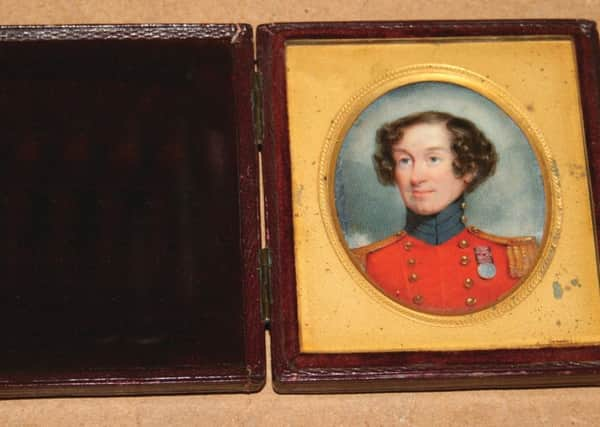Exhibition to remember the Battle of Waterloo on 200th anniversary


The defeat of Napolean Bonaparte and the French at Waterloo, on the evening of Sunday, June 18 1815, brought to a close decades of conflict which began with the French Revolution in 1789 and continued with the Napoleonic Wars.
Napolean had been exiled to the island of Elba after his defeat by the Allies in 1814. He escaped from Elba in February 1815 and returned to Paris.
Advertisement
Hide AdAdvertisement
Hide AdThe Duke of Wellington was in command of the Allied forces in the Netherlands. In response to Napolean’s return he assembled the British forces from garrisons there and urgent reinforcements were sent from England.
Although many British soldiers were away in America his forces totalled some 40,000 men. The remaining 100,000 were hired from the smaller powers as was customary.
Each of the Allies mustered a quota similar in number. As the Russians and Austrians moved slowly towards the French borders the Prussians, under the command of Gebhard von Blucher, came up in May.
Napolean left Paris on the 12th June 1815 intending to drive a wedge between the British and the Prussians in order to divide and defeat them and regain Belgium.
Advertisement
Hide AdAdvertisement
Hide AdOn the June 15 Napolean attacked the Prussians on the Sambre driving them back to the North-East.
The Belgians were also forced back towards Brussels as far as a farm house known as the Quatre Bras. Wellington ordered his forces to meet at Quatre Bras. He too was attacked but determinedly held his positon before drawing back and establishing himself at Waterloo.
On the June 18 column after column of Napolean’s forces fell upon the British only to be repelled by Wellington’s defensive technique and the discipline and courage of his troops. Evening brought the sound of the Prussian guns. Blucher had evaded the French forces deployed to keep him from the field of battle.
Now certain of his ally’s aid Wellington advanced his whole line of infantry under the support of artillery and cavalry. The French were driven from the battle field in confusion. Napolean’s power was broken. He fled to Paris and surrendered to British forces before being imprisoned on St Helena.
Advertisement
Hide AdAdvertisement
Hide AdObjects which make history tangible and alive are highly prized by collectors. This is particularly true of collectors of militaria and medals.
Take for example the rare Waterloo Medal with impressed naming to ‘Quar. Mast. Ben. Sweeten, 1st Batt. 52nd Reg. Foot.’ It came with its original adapted steel clip but lacked the suspension ring. Together with a newspaper cutting relating to the Sweeten Family it sold for £4600 in a Toovey’s specialist medals auction to a Horsham based collector.
However, a lot of militaria remains much more affordable. For example the colour aquatint titled ‘The Battle of Waterloo June 18th 1815’, after W. Heath would sell for around £120. The oval miniature head and shoulders portrait of a British Military Officer in Uniform, decorated with a Waterloo Medal, dates from the early 19th Century and is a watercolour on ivory. It was sold at Toovey’s for £300.
If you would like to know more about the background to this most famous battle Horsham Museum and Art Gallery’s exhibition, ‘Waterloo: 100 Days’, explores the events that led to the final defeat and exile of Napolean Bonaparte. Horsham Museum is fortunate to have many original documents from the period including the plan of the barracks drawn in 1815 when the barracks were sold and dismantled.
Advertisement
Hide AdAdvertisement
Hide AdThe exhibition features documents which illustrate how the town was dramatically affected by the soldiers giving a flavour of the period through costume, books, prints, china and glassware. The exhibition runs until July 11 2015.
Toovey’s next specialist auction of Edged Weapons, Firearms, Medals, Awards and Militaria will be held on Wednesday 9th September 2015. To find out more telephone 01903 891955 or go to www.toovey’s.com.
n Rupert Toovey is a senior director of Toovey’s, the leading fine art auction house in West Sussex, based on the A24 at Washington - www.tooveys.com - and a priest in the Church of England Diocese of Chichester.